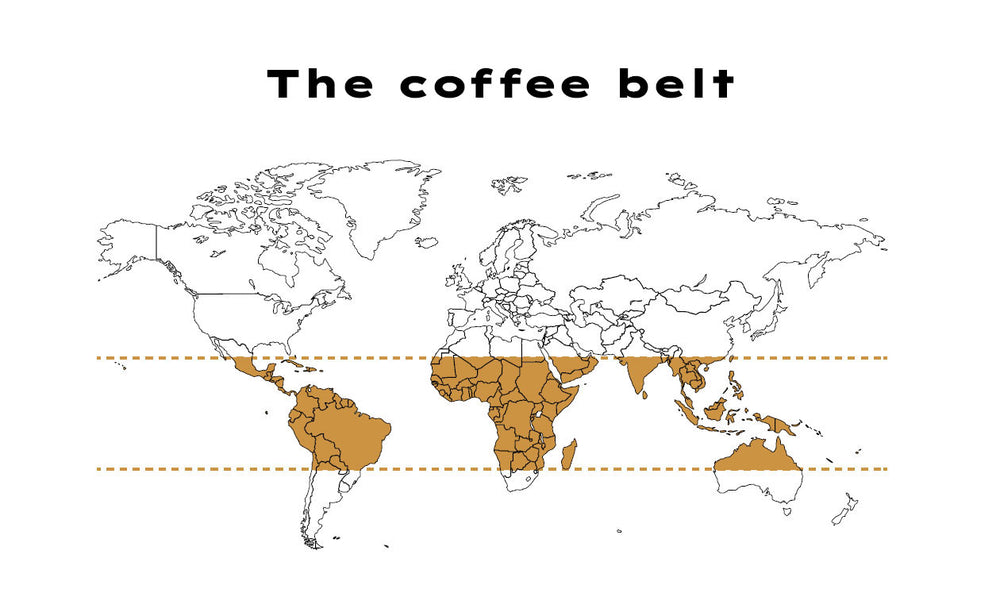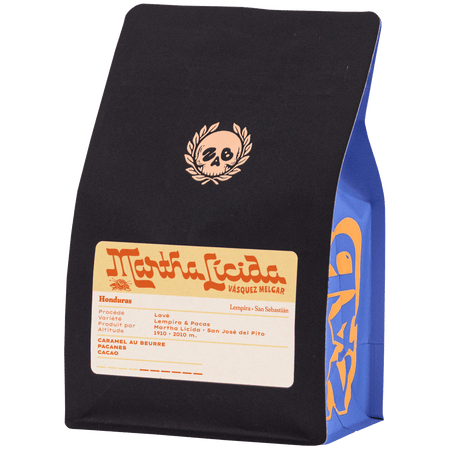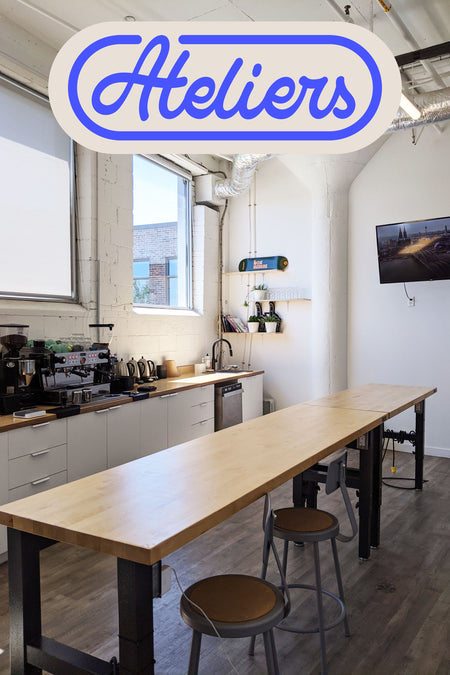Country
The optimal location for growing coffee is in the equatorial zone, between the Tropic of Cancer and the Tropic of Capricorn, commonly known as the Coffee Belt. The majority of countries in this zone, surrounding the planet like a belt, offer ideal conditions for the specific growing needs of Arabica coffee.

Region
Each region offers a specific terroir which has an important influence on coffee's taste. This is why, in the world of specialty coffee, it is interesting to have lots of coffee that come from a specific region, in order to directly see the influence of terroir on coffee varieties.
The processes
Coffee is the pit of a fruit – a cherry! Before a coffee can be roasted and enjoyed, the seed needs to be extracted from it’s cherry and dried; that is what we are talking about when referring to processes. The impact of the processes on flavour is significant. There are three basic processes: the natural process, the washed process and the honey/pulped natural process.
Producer vs coop
It is possible to collaborate directly with small or large farms through exporters and importers. Small producers can also organize themselves into cooperatives or be affiliated with a washing station to process their cherries and group their coffee beans sales with the ones of other members.
Varietal
Arabica coffee boasts a diverse array of varieties, which contribute to the important distinctions in tasting notes. Many of these varieties were created by farmers and breeders in order to adapt to different climatic conditions; others are natural mutations discovered in coffee plantations.
Altitude
High altitude results in lower temperatures, promoting slower fruit development. The higher we go, the slower the ripening, resulting in a denser fruit with more complex flavours and higher acidity. Conversely, a lower altitude produces a coffee with a more classic and round profile.

Tasting notes
Coffee is an extremely complex and aromatic beverage. Identifying specific tasting notes for each coffee makes it easier to compare beans or to guide consumers toward options that align with their preferences. There is nothing added… we are talking about naturally developed flavours within the coffee bean.
Date
Freshly roasted coffee contains gases that can alter its flavours. For optimal results, it is important to let coffee rest for approximately 3 weeks following the roasting date, allowing coffee to degas. After these three weeks, the aromas will gradually diminish, without necessarily becoming rancid.








